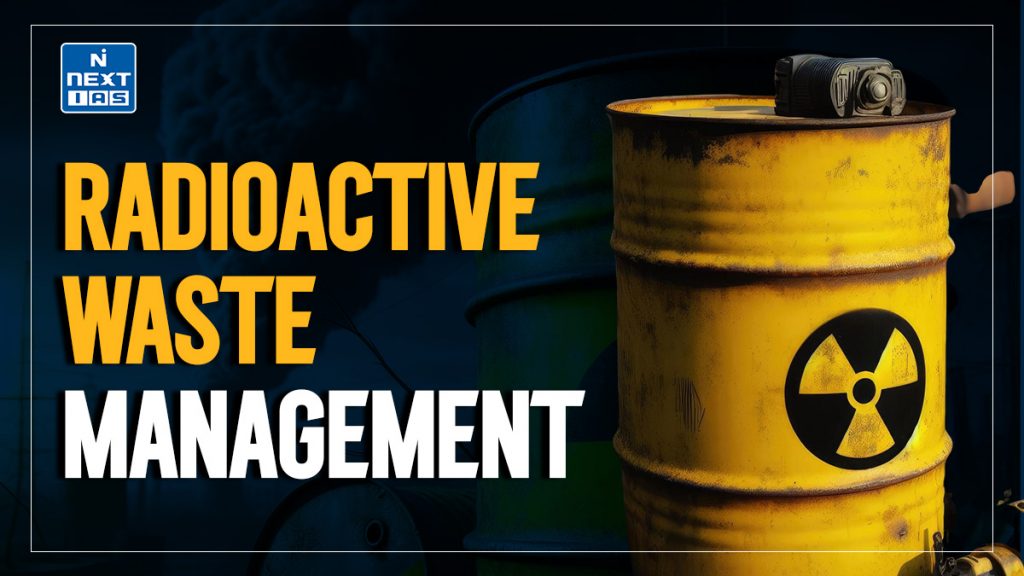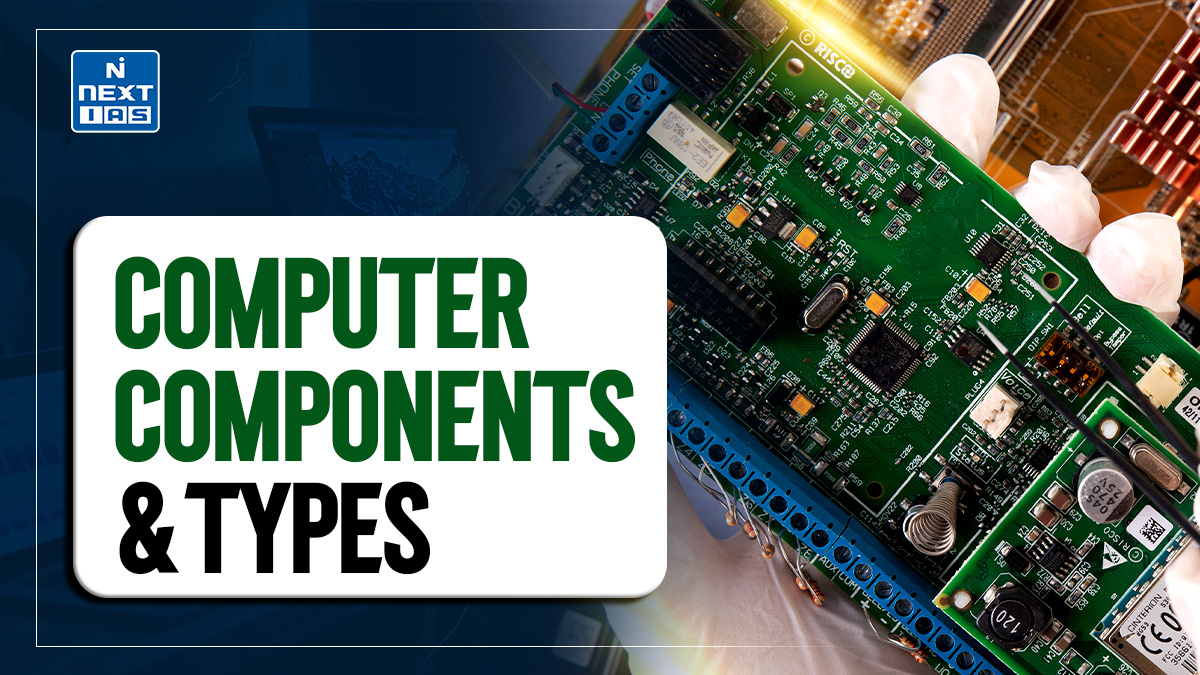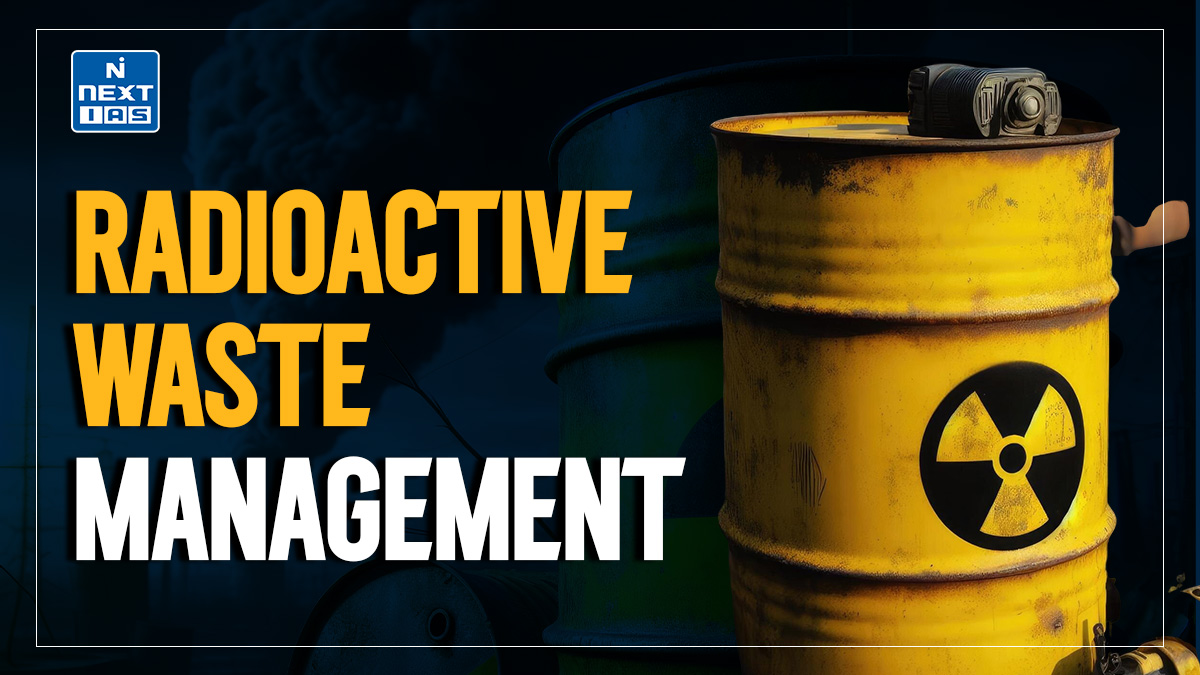
Radioactive waste management involves the safe handling, treatment, and disposal of materials containing radioactive substances. Generated from nuclear power, medical, and industrial activities, it aims to protect human health and the environment. Strategies include containment, minimization, and secure storage, ensuring long-term safety and compliance with regulatory and ethical standards.
What is Radioactive Waste Management?
- Radioactive waste management refers to the systematic handling, treatment, storage, and disposal of waste materials that contain radioactive substances. These wastes are by-products of nuclear power generation, medical applications, industrial processes, and research activities.
- Proper management is essential to protect human health and the environment from harmful radiation exposure.
- Key principles include waste minimization, containment, and isolation to prevent the release of radioactivity. Methods vary depending on the waste’s radioactivity level, from short-term storage for low-level waste to long-term disposal for high-level waste in deep geological repositories.
- Effective management ensures compliance with safety regulations and supports sustainable nuclear technology use.
Radioactive Waste Management: Indian Scenario
- Any activity related to the nuclear fuel cycle that produces or uses radioactive materials generates radio-active waste. Public acceptance of nuclear energy largely depends on public assurance for safe management of radioactive wastes. Not all nuclear wastes are particularly hazardous or difficult to manage as compared to other toxic industrial wastes.
- Management of these wastes covers the entire range of activities right from handling, treatment, conditioning, transport, storage and disposal. The recent technological developments in India realize the recovery of valuable radionuclide from radioactive waste for societal application besides ensuring the highest level of safety in the management of radioactive waste.
Understanding Radioactive Waste
- Radioactive wastes are generated during various operations of the nuclear fuel cycle as well as production and use of radionuclide for various societal applications. The activities like mining and processing of uranium ore, fabrication of nuclear fuel, generation of power in nuclear reactor, processing of spent nuclear fuel, management of radioactive waste, production and use of radionuclide for various industrial and medical applications, research associating with radioactive material etc. generates the different types of radioactive waste.
- Radioactive waste can be in gas, liquid or solid form, and its level of radioactivity can vary. The waste can remain radioactive for a few hours or several months or even hundreds of thousands of years. Depending on the level and nature of radioactivity, radioactive wastes can be classified as exempt waste, Low & Intermediate level waste and High Level Waste.
- The most important and advantageous property of radioactive waste is ‘Its radioactive hazard potential reduces with time depending on the half lives of radionuclide present in the waste’. Such feature differentiates them significantly from conventional chemical or industrial waste, hazard potential or toxicity of which does not alter with time and remains constant till its transformation to other suitable form.
Low and Intermediate Level Waste (LILW)
- Low and Intermediate Level Waste (LILW) radioactive waste are generated in radiation facilities and nuclear fuel cycle operations ranging from uranium processing, fuel fabrication, nuclear power plants, research reactors, radiochemical facilities and fuel reprocessing. LILW have generally high volumes and low levels of radioactivity.
- They are segregated based on their physical nature and different management techniques have been established based on their nature for their effective treatment. They are further classified based on their radioactivity as well as also based on half life of radionuclide, as short lived and long lived wastes.
High Level Waste
- High level radioactive liquid waste (HLW) containing most (~99%) of the radioactivity in the entire fuel cycle is produced during reprocessing of spent fuel. A major stream of this waste is the aqueous radioactive waste generated from the first cycle extraction of the spent fuel processing.
| Vitrification India is one of the few countries to have mastered the technology of vitrification. Over the years BARC has developed the technology for vitrification of HLW. India has a unique distinction of having operating vitrification plant at Trombay, Tarapur and Kalpakkam. In Trombay vitrification process is essentially batch consisting of heating and fusing of pre-concentrated waste and glass forming additives and is carried out in Induction Heated Metallic Melter based on induction heating. While the plant at Trombay is based on pot glass technology, the concept of Joule Heated Ceramic Melter (JHCM) is utilized at the facility at Tarapur. The Joule Melter Technology is essentially a single step process, where immobilisation of HLW in a borosilicate glass matrix is achieved in a refractory-lined melter. Cold Crucible Induction Melter (CCIM) is emerging as a futuristic technology for vitrification of high level liquid waste. Besides being compact and advantageous as in-cell equipment, it offers flexibility, susceptibility to treat various waste forms with better waste loading and enhanced melter life. |
- Also solid waste not suitable for disposal in near surface disposal facilities due to significant concentration of long-lived radionuclides or decay heat above the prescribed limits may also need to be regarded as high level waste.
- Issue of the long lived radioactive waste has been the focal point of debate for the success of nuclear power. Planning for management of HLW thus takes into account the need for their effective isolation from the biosphere and their continuous surveillance for extended periods of time spanning several generations. To meet this objective in the long term, waste isolation systems comprising multiple barriers are employed so as to prevent the movement of radionuclides back to the human environment.
The management of high level waste in the Indian context, is carried out in the following three stages:
- Immobilisation of high level liquid waste into inert vitrified borosilicate glasses through a process called ‘vitrification’.
- Engineered interim storage of the vitrified waste for passive cooling & surveillance over a period of time, qualifying it for subsequent disposal.
- Disposal of the vitrified waste in a deep geological repository.
Management of Radioactive Wastes
Utmost emphasis is given to waste minimization, and volume reduction in the choice of processes and technologies adopted in radioactive waste management plants. As a waste management philosophy, no waste in any physical form is released / disposed to the environment unless the same is cleared, exempted or excluded from regulations. A comprehensive radioactive waste management is established taking into account the operational capability for the management of radioactive waste and an independent regulatory capability for its overview.
In consideration to the primary objective of protecting human health, environment and future generations, the overall philosophy for safe management of radioactive wastes in India, is based on the concept of:
- Delay and Delay
- Dilute and Disperse
- Concentrate and Contain
- Recycle and Reuse
Effective management involves segregation, characterization, handling, treatment, conditioning and monitoring prior to final disposal.
Solid Waste
- Substantial amount of LIL wastes of diverse nature, gets generated in different nuclear installations as radioactive solid waste. Treatment and conditioning of solid wastes are practiced, to reduce the waste volume in ways, compatible to minimizing the mobility of the contained radioactive materials.
- Proper disposal of Solid waste is essential to ensure protection of the health and safety of the public and quality of the environment including air, soil, and water supplies. Radiological hazards associated with short lived wastes < 30 years half life get significantly reduced over a few hundred years by radioactive decay.
- Disposal of waste is carried out in specially constructed engineering modules such as stone lined trenches, reinforced concrete trenches and tile holes at Near Surface Disposal Facility (NSDF). These disposal structure are located both above and under-ground in access – controlled areas and are designed based on multi barrier principle for ensuring effective containment and isolation of the radioactivity till it decays to innocuous level.
- The high level solid wastes contain large concentration of both short and long lived radionuclide’s, warranting high degree of isolation from the biosphere and usually calls for final disposal into Geological Disposal Facility (GDF). A key idea was that long-term disposal would be best carried out by identifying suitable sites at which the waste could be buried, a process called deep geological disposal.
Liquid Waste
- Liquid waste streams are pre-treated by various techniques, such as filtration, adsorption, chemical treatment, evaporation, ion exchange; reverse osmosis etc., prior to immobilization in suitable matrix depending upon the nature, volume & radioactivity content.
Gaseous Waste
- Gaseous waste is treated at the source of generation. Various techniques involoving adsorption on activated charcoal, absorption / scrubbing, filtration by high efficiency particulate air filter etc., are used for effective treatment of gaseous waste.
Wealth from Waste
- High level radioactive liquid waste contains various useful fission product such as 137Cs, 90Sr, 106Ru etc., which have many industrial as well as medical applications. The energy associated with these isotopes can be used for blood irradiation, food preservation, sewage treatment, therapeutic applications, brachy therapy & various other industrial applications. Separation and recovery of these useful isotopes from radioactive waste and their deployment for societal application makes the waste as a material of resource.
137Cesium Glass Pencils for Irradiation
- 137Cs can be used as a prominent alternate irradiation source to 60Co for various applications like blood irradiator, food irradiator, irradiation of sewage sludge etc. Due to longer half-life of 137Cs as compare to 60Co, the radiation sources need to be replaced at lesser frequency. 137Cs is available in large quantity in radioactive waste as one of the principal fission product.
90Strontium for Milking of 90Yttrium for Radiopharmaceutical Application
- 90Sr, another isotope present in waste, decays to 90Y by beta decay having its application as a radiopharmaceutical product for therapeutic use during treatment of cancer.
106Ru for Eye Cancer Treatment
- 106Ru has an important application for eye cancer treatment as a brachy therapy. Till date, 106Ru plaques are imported. Technology for recovery of 106Ru from nuclear waste and fabrication of 106Ru containing silver plaque has been successfully developed as an import substitute for eye cancer treatment along with cost effectiveness.
Way Forward
India’s radioactive waste management can advance through enhanced technological innovation, like advanced vitrification and deep geological repositories; policy strengthening with clear regulations and public transparency; capacity building for skilled personnel; and international collaboration for best practices. Promoting public awareness and leveraging clean energy benefits can ensure sustainable, safe waste handling.
Conclusion
Effective radioactive waste management ensures environmental safety, public health, and sustainable use of nuclear technology. By adopting advanced containment, recycling, and disposal methods, alongside robust regulatory frameworks, nations can minimize risks. International collaboration and innovation are key to achieving long-term solutions that balance nuclear benefits with environmental and human safety.
GS - 3




